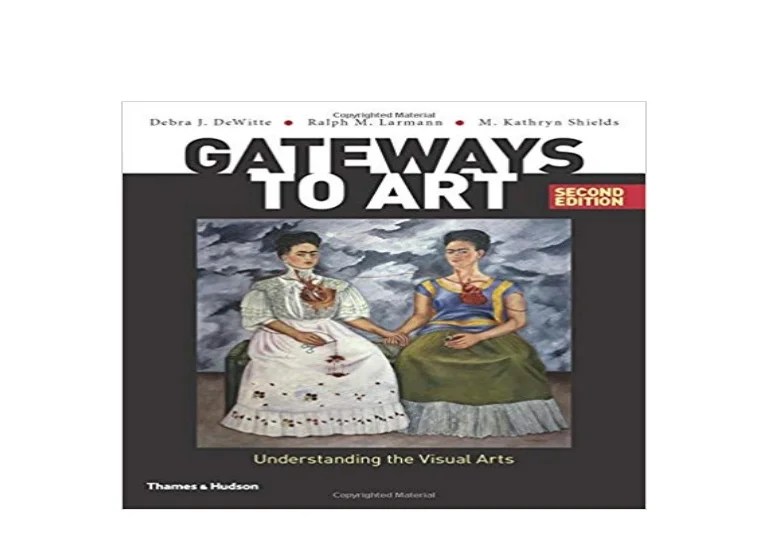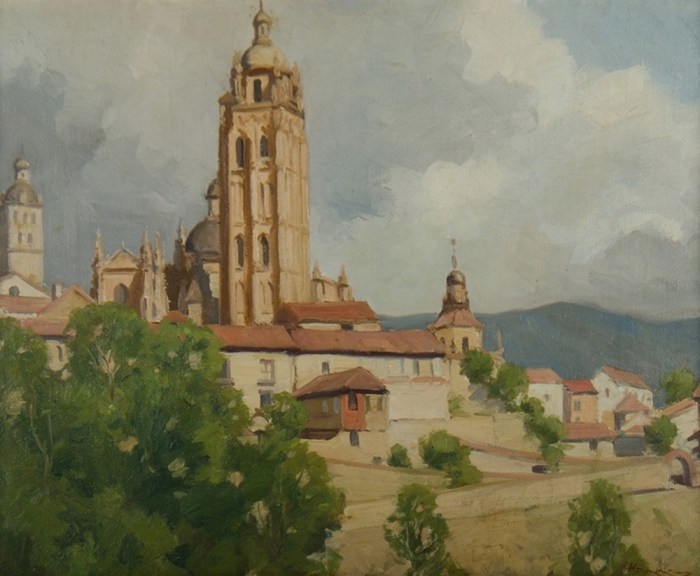Gateway to art 4th edition – Embark on a captivating journey with Gateway to Art, 4th Edition, where art comes alive in a vibrant tapestry of knowledge and inspiration.
This meticulously crafted textbook invites you to explore the fascinating world of art, delving into its rich history, diverse movements, and contemporary expressions.
Introduction to “Gateway to Art, 4th Edition”

Gateway to Art, 4th Edition, is a comprehensive textbook designed to provide students with a solid foundation in art history, appreciation, and criticism. It covers a wide range of art forms, periods, and cultures, from prehistoric cave paintings to contemporary installations.
This textbook is primarily intended for undergraduate students enrolled in introductory art history courses. It is also suitable for general readers interested in gaining a deeper understanding of art and its significance.
Key Features
- Comprehensive coverage:Gateway to Art provides a thorough overview of art history, covering major art forms, periods, and cultures.
- Visual richness:The textbook is richly illustrated with high-quality images of artworks, allowing students to engage with the material visually.
- Clear and engaging writing:The text is written in a clear and accessible style, making it easy for students to understand the complex concepts of art history.
- Critical thinking exercises:The textbook includes exercises that encourage students to think critically about art and develop their own interpretations.
- Online resources:The textbook is accompanied by a range of online resources, including interactive quizzes, timelines, and image galleries.
Updates in the 4th Edition
The 4th edition of Gateway to Art has been extensively updated to reflect the latest scholarship in art history. Some of the key updates include:
- New chapters:Two new chapters have been added to the textbook, one on contemporary art and one on the art of the African diaspora.
- Revised content:The content of the textbook has been revised and updated throughout, taking into account new research and discoveries.
- Expanded coverage:The textbook now includes expanded coverage of non-Western art, including art from Asia, Africa, and the Americas.
- New images:The textbook has been updated with over 200 new images, providing students with a more comprehensive visual experience.
Content and Organization

Gateway to Art, 4th Edition is a comprehensive textbook that provides a thorough exploration of the world of art. The book is organized into 20 chapters, each of which is further divided into multiple sections.
The logical flow of topics follows a chronological order, starting with the origins of art in prehistoric times and progressing through the major art movements of history. Each chapter focuses on a specific period or style of art, providing an in-depth examination of the key artists, works, and ideas of the time.
Key Themes and Concepts
Throughout the textbook, several key themes and concepts are emphasized:
- The importance of context: Art is not created in a vacuum but is influenced by the social, cultural, and historical context in which it is produced.
- The diversity of art: Art is a multifaceted phenomenon that encompasses a wide range of forms, styles, and media.
- The power of art: Art has the ability to communicate ideas, emotions, and experiences in a way that transcends language.
- The importance of critical thinking: Understanding art requires the ability to analyze, interpret, and evaluate artworks.
Pedagogical Features: Gateway To Art 4th Edition
Gateway to Art, 4th Edition, incorporates various pedagogical tools to enhance learning and make the subject matter more accessible and engaging for students.
These features include visual aids, interactive exercises and activities, and case studies and real-world examples, all of which contribute to student engagement and understanding.
Visual Aids
The textbook is richly illustrated with a wide range of visual aids, including:
- Illustrations that depict key concepts and provide visual representations of art historical periods, styles, and techniques.
- Diagrams that break down complex ideas into simpler, more manageable components.
- Charts that summarize information and provide a quick overview of important topics.
These visual aids help students to visualize and understand the concepts being discussed, making the learning process more effective and engaging.
Interactive Exercises and Activities
The textbook includes a variety of interactive exercises and activities that encourage students to actively participate in the learning process.
- Discussion questions that prompt students to think critically about the material and share their own perspectives.
- Hands-on activities that allow students to apply their knowledge to real-world situations.
- Online resources that provide additional information and opportunities for further exploration.
These interactive elements help to keep students engaged and motivated, while also reinforcing the concepts being taught.
Gateway to Art, 4th Edition, offers a comprehensive exploration of art history and techniques. For those interested in delving deeper into architectural forms, the truss blocks on a ladder provide a fascinating study. These interlocking blocks showcase the interplay of structure and aesthetics, embodying the principles discussed in Gateway to Art, 4th Edition.
Case Studies and Real-World Examples, Gateway to art 4th edition
The textbook also includes case studies and real-world examples that provide students with a practical understanding of the concepts being discussed.
- Case studies that explore specific works of art or art historical periods in depth, providing students with a detailed understanding of the context and significance of the work.
- Real-world examples that show how art is used in everyday life, helping students to connect the concepts they are learning to the real world.
These case studies and real-world examples help students to see how art is relevant to their own lives and make the learning process more meaningful.
Artistic Movements and Styles
This textbook offers a comprehensive overview of the major artistic movements and styles that have shaped the history of art. From ancient to contemporary times, it covers the historical context, key characteristics, and influential artists associated with each movement.
By studying these movements and styles, readers will gain a deeper understanding of the evolution of art and its impact on culture and society. Through examples of artworks, they will see how the principles of each style are manifested in practice.
Ancient Art
Ancient art encompasses the artistic creations of civilizations from around the world, including Egypt, Mesopotamia, Greece, and Rome. It is characterized by its strong emphasis on symbolism, religious themes, and the depiction of human figures in a stylized manner.
- Key Characteristics:Formalism, attention to detail, narrative scenes, use of natural materials (e.g., stone, clay, wood)
- Influential Artists:Unknown (due to the lack of individual attribution)
- Examples:The Great Pyramids of Giza, the Venus of Willendorf, the Parthenon sculptures
Art Appreciation and Criticism

Art appreciation plays a pivotal role in this textbook, fostering an understanding of the significance of art in human culture. It equips readers with the skills to analyze and interpret artworks, unlocking the rich tapestry of meanings and emotions they convey.
Principles and Techniques for Art Analysis
Analyzing artworks involves employing a systematic approach that considers various aspects, including:
Formal Analysis
Examining the visual elements (e.g., line, shape, color, texture) and how they interact to create a cohesive composition.
Contextual Analysis
Understanding the historical, cultural, and biographical factors that influenced the creation of the artwork.
Interpretive Analysis
Exploring the symbolic meanings, themes, and messages conveyed through the artwork.
Perspectives and Approaches to Art Criticism
Art criticism encompasses a diverse range of perspectives and approaches, each offering unique insights into artworks:
Formalist Criticism
Emphasizes the intrinsic qualities of the artwork itself, focusing on its formal elements and composition.
Contextualist Criticism
Considers the artwork within its historical, cultural, and social context, exploring its relationship to the artist’s life and the prevailing ideas of the time.
Interpretive Criticism
Seeks to uncover the hidden meanings and messages embedded within the artwork, often employing psychoanalytic or symbolic analysis.
Contemporary Art and Emerging Trends

The contemporary art scene is a vibrant and ever-evolving landscape, characterized by a diverse range of artistic practices and innovative expressions. This era has witnessed a significant impact of technology, globalization, and social issues on the way art is created and perceived.
Globalization has facilitated the exchange of ideas and influences across borders, leading to a cross-pollination of artistic styles and techniques. The advent of digital technologies has opened up new avenues for artistic expression, with artists embracing virtual reality, artificial intelligence, and interactive installations to create immersive and engaging experiences.
Societal Issues and Activism
Contemporary art has become a powerful platform for addressing social and political issues, with artists using their work to raise awareness, provoke discussion, and inspire change. Works that explore themes of identity, inequality, environmentalism, and social justice are increasingly prevalent.
- Theaster Gates: An American artist who creates installations and sculptures from found objects, often exploring themes of race, class, and urban renewal.
- Ai Weiwei: A Chinese artist and activist whose work often critiques the Chinese government and promotes human rights.
Conceptual Art and Performance Art
Conceptual art, which emphasizes the idea behind the artwork rather than its physical form, has gained prominence in recent years. Performance art, involving live and often interactive performances, has also emerged as a significant form of artistic expression.
- Marina Abramović: A Serbian performance artist known for her immersive and provocative performances that explore themes of endurance, vulnerability, and connection.
- Tino Sehgal: A German artist whose performances consist of live interactions with participants, often exploring themes of human relationships and social dynamics.
FAQ Overview
What is the target audience for Gateway to Art, 4th Edition?
Gateway to Art, 4th Edition, is designed for students and general readers seeking an accessible and engaging introduction to the world of art.
How does the 4th edition differ from previous editions?
The 4th edition features updated content, revised pedagogical tools, and an expanded focus on contemporary art and emerging trends.
What key themes are covered in the textbook?
Gateway to Art, 4th Edition, explores themes such as artistic movements, art appreciation, art criticism, and the impact of technology and globalization on contemporary art practices.